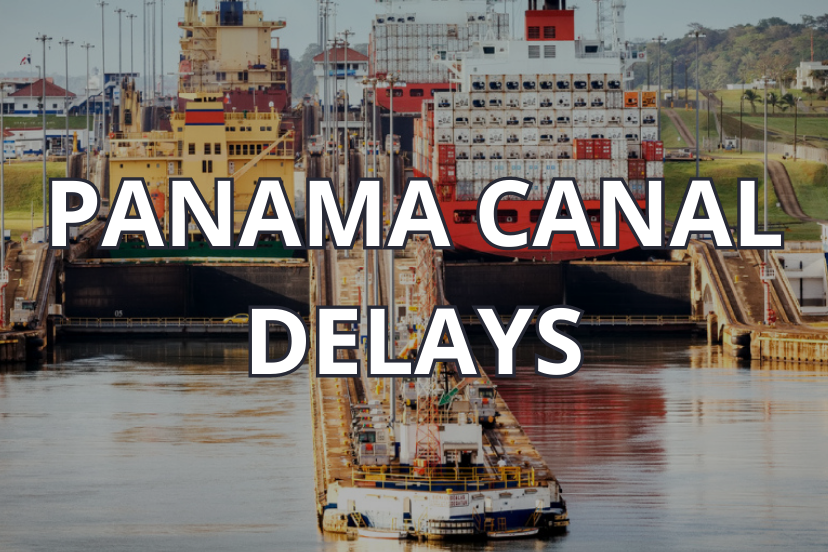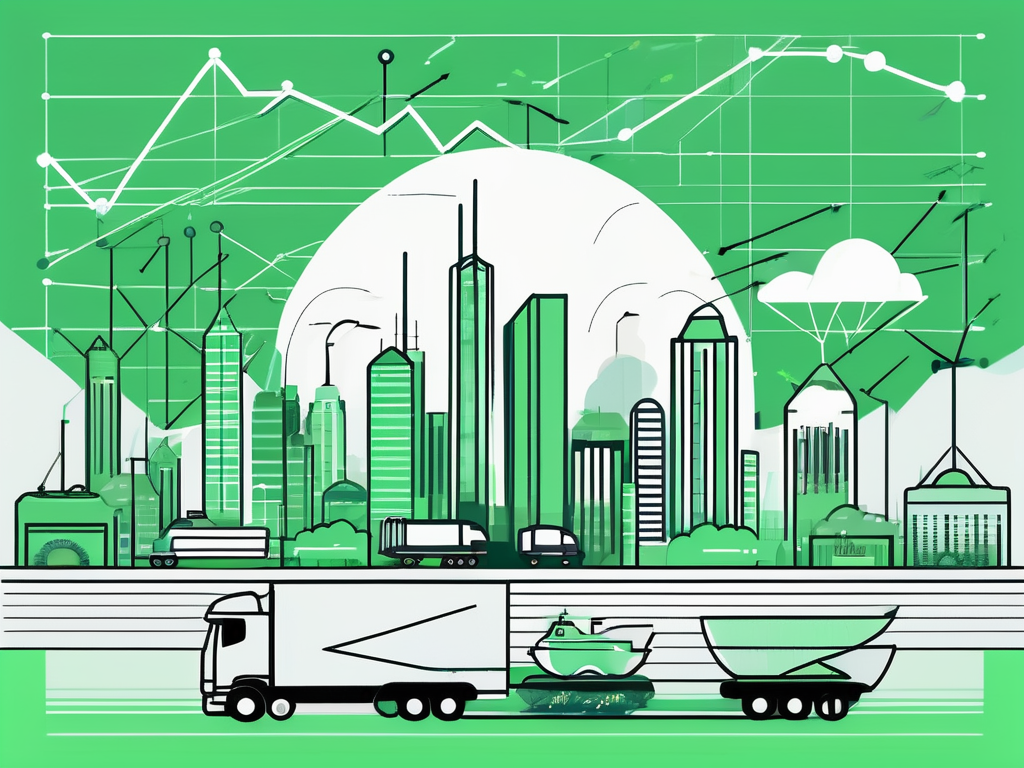Share this
Will the Panama Canal Delays Impact Ecommerce Businesses?
by Kyla Friel on Aug. 28, 2023

The recent Panama Canal delays, caused by prolonged drought and climate change, have supply chain experts and ecommerce professionals on high alert.
The Panama Canal, often regarded as a linchpin in global trade, is currently facing severe operational disruptions. Historically low water levels have resulted in a rapidly growing queue of vessels awaiting passage. For ships, average wait times have escalated to 9-11 days, but the repercussions for global supply chains could continue for far longer as water-conserving restrictions are to remain in place for the next 10 months.
Ecommerce relies heavily on efficient and predictable shipping, and the delays at the Canal are causing ripples through the supply chain. With roughly 40% of U.S. container traffic moving through the Canal, American ecommerce companies, gearing up for peak sales periods like the Black Friday-Cyber Monday and Christmas seasons, are finding themselves in a precarious position.
What does this mean for ecommerce?
For the ecommerce industry, disruptions due to the Panama Canal delays could mean:
- Increased Shipping Costs: With the rise in operational expenses, consumers might bear the brunt with higher product prices.
- Delayed Deliveries: Longer wait times at the Canal could cascade down to consumers waiting longer for their online orders.
- Stock Shortages: Inventory for some ecommerce businesses might be affected, leading to potential stockouts during crucial sales periods.
- Strategic Rerouting: Businesses might need to seek alternative routes or methods, adding to operational complexities.
Industry experts like Niels Rasmussen, a chief shipping analyst at BIMCO, are concerned that this congestion might lead to inevitable freight rate increases, a cost that would likely be passed down to consumers. “The longer the situation persists the bigger the chances are of further freight rate increases and the likelihood that shippers will begin to divert cargo back to the US west coast ports and use rail to bring the cargo to its final destination,” Rasmussen said.
As the Canal authorities impose weight and other limits – cutting the depth limit for larger vessels from 50 feet to 43.5 feet and reducing daily transits to just 32 vessels a day – ships are forced to lighten their loads, adding more costs. Some are offloading containers onto trains to meet draft levels, leading to higher transportation expenses. Such cost escalations could eventually get passed on to consumers, potentially raising shipping and ecommerce product prices.
Possible Solutions
One of the short-term alternatives businesses are considering amid these challenges is rerouting ships around the southern tip of South America or through the Suez Canal, both of which are costly and time-consuming options. And for ecommerce businesses relying on timely deliveries, such delays could lead to stock shortages, hampered sales, and customer dissatisfaction.
In the long term, many U.S. firms are considering near-shoring their production to countries like Mexico to circumvent the Canal’s persistent issues. However, shifting production requires significant infrastructure investments, including more truckers and warehouse space.
As the situation evolves, experts like Andy Lane, a partner at shipping advisory CTI Consultancy, call for coordinated action between global shipping bodies and the Panama Canal Authority. The crisis highlights the vulnerability of key trade routes like the Panama Canal to climate change, and raises urgent questions about how the global community can adapt and mitigate these growing threats to essential infrastructure.
Have an ecommerce business, or involved with supply chains? Subscribe to our monthly newsletter below to stay up to date with what’s happening in supply chain and logistics!
Share this
You May Also Like
These Related Articles

How to Predict Carrier Rates 2025 and Beyond

Capitalize on Loop’s eCommerce Line of Credit for the Holidays: Part 2

15 Supply Chain KPIs Every Ecommerce Business Should Track
- April 2025 (18)
- March 2025 (26)
- February 2025 (26)
- January 2025 (37)
- December 2024 (16)
- November 2024 (23)
- October 2024 (22)
- September 2024 (27)
- August 2024 (9)
- July 2024 (8)
- June 2024 (5)
- May 2024 (8)
- April 2024 (8)
- March 2024 (6)
- February 2024 (6)
- January 2024 (5)
- December 2023 (3)
- November 2023 (3)
- October 2023 (5)
- September 2023 (4)
- August 2023 (2)
- July 2023 (1)
- June 2023 (4)
- March 2023 (2)
- October 2022 (1)
- September 2022 (5)
- August 2022 (4)
- July 2022 (7)
- June 2022 (4)
- May 2022 (4)
- April 2022 (6)
- March 2022 (2)
- February 2022 (1)
- January 2022 (3)
- December 2021 (2)
- November 2021 (4)
- October 2021 (2)
- September 2021 (5)
- August 2021 (4)
- July 2021 (4)
- June 2021 (3)
- May 2021 (2)
- April 2021 (3)
- March 2021 (3)
- February 2021 (3)
- January 2021 (2)
- December 2020 (4)
- November 2020 (2)
- October 2020 (4)
- September 2020 (2)
- July 2020 (5)
- June 2020 (4)
- May 2020 (2)
- April 2020 (2)
- March 2020 (4)
- February 2020 (1)
- December 2019 (1)
- May 2018 (1)
- March 2018 (2)
- February 2018 (3)
- January 2018 (3)
- November 2017 (3)
- July 2017 (4)
- March 2017 (3)
- February 2017 (5)
- January 2017 (3)
- December 2016 (4)
- November 2016 (6)
- October 2016 (6)
- October 2015 (1)
- September 2015 (1)
- June 2015 (3)
- May 2015 (3)
- August 2014 (1)
- July 2014 (1)
- March 2014 (1)
- February 2014 (1)